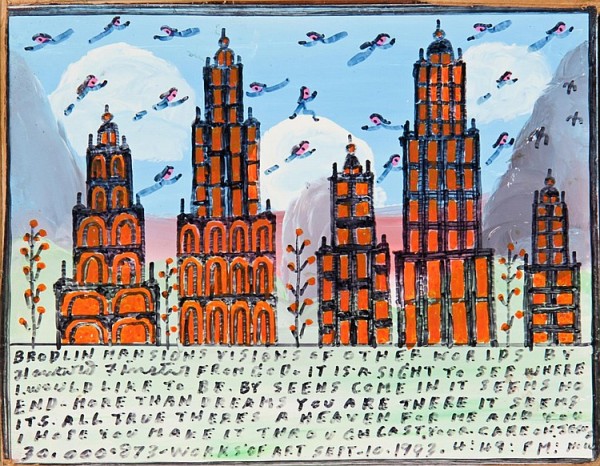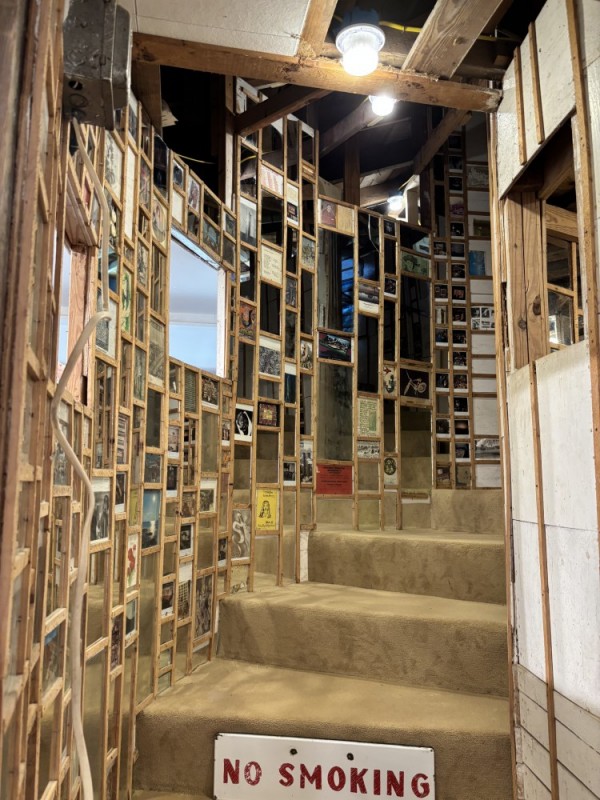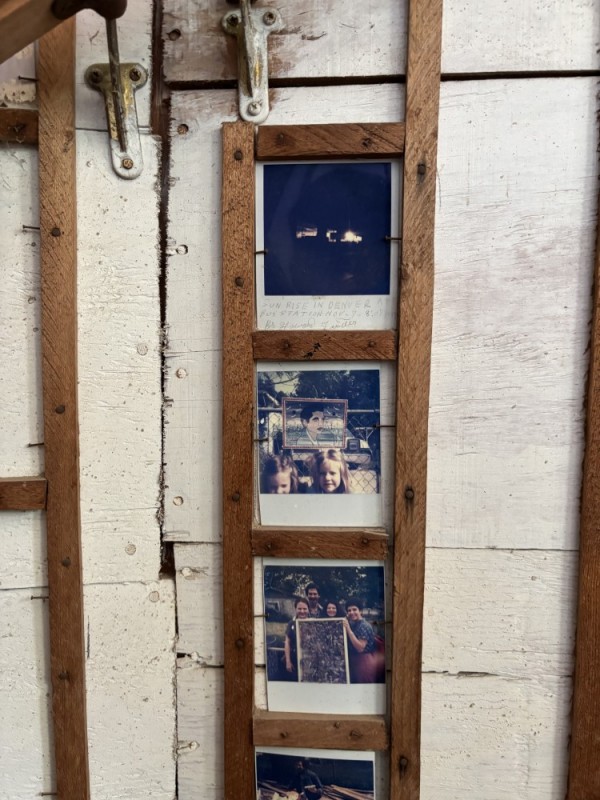Characteristic of Georgia June, it was a muggy, 90-something degree day on the occasion of the reopening of the World’s Folk Art Church last Sunday, as one can imagine it was on many summer days amidst Howard Finster’s long term outdoor work in Paradise Garden between 1970 and his passing in 2001. On June 22nd, Chattooga County neighbors and Finster devotees converged on the park to celebrate the completed stabilization of the five-story Folk Art Church structure, which sits at the center of Finster’s Garden in Pennville and was built up by the artist atop an abandoned wooden country church then adjoining his property between the mid-1980s and 1987. Closed due to structural instability in 1999, the World’s Folk Art Church welcomed the public back that Sunday following a seven year-long preservation effort undertaken by the Paradise Garden Foundation. Fueled by iced tea and pimento cheese sandwiches served at the event, visitors were able to navigate the winding spiral staircase at the heart of the church, walk along the aluminum-shingle laden porch encircling the top story, and experience the newly-installed exhibitions and preserved studio spaces occupying the Church’s first floor.

Figure 1. Howard Finster, Brodlin Mansions, 1993, mixed media on wood board.
While the Church’s presence along the horizon of the Garden had served as a stunning architectural parallel to the many “heavenly mansions” depicted by Finster in his more well-known illustrations [fig 1] and panel paintings during its long period of closure, the ability to explore the complex interior of the structure served as important evidence of the artist’s aptitude for creative three-dimensional interventions in space. Unexpected interruptions of the architectural plan encouraged exploration of the structure’s innards and the artist’s construction process––a gap between the roof of the original 1960 church and Finster’s new multi-story plywood construction, visible through an opening in the wall of the spiral staircase [fig 2], for instance, serves as a miniscule, salvaged object installation venue incorporated into the fabric of the building. Perhaps most enchanting was the experience of walking up the Church’s spiral staircase surrounded by a complex lattice work of wood framing and installed paper and photographic ephemera, all of which constitutes a mosaic-like public archive of Finster’s life at and beyond the Garden. Along the staircase, polaroids of the artist’s views from airplane windows amidst his travels were hung next to images captured of artworks then-in process, family members visiting the house, gallery business cards, art event flyers, and images clipped from mass produced publications [fig. 3], all of which were punctuated by pieces of mirror similar to those installed in the nearby Mirror House.

Figure 2. The spiral staircase inside of the World's Folk Art Church. Photo courtesy of the author.
The re-opening of the Church served as an emotional and momentous day for the staff of the Garden, who had begun the day with a collective blessing of the interior, followed by the hosting of musicians Jeneal Johnson and Jackie Shropshire-Hammond for a gospel performance, organized community craftmaking for visitors in the style of Finster, and the serving of food by the local Chattooga Garden Club. Accessible to the public after 25 years, Finster’s church will serve as a continuation of the artist’s initial hope for the building as a place where people might visit and then “carry messages with them when they leave the church and give them to people all over the world.” Its newfound accessibility will ensure that, as per the artist’s wishes, the World’s Folk Art Church “will belong to the whole population of earth planet. People all over the world can see and read from it.”

Figure 3. Three polaroid photos affixed to the interior of the spiral staircase in the World's Folk Art Church. Photo courtesy of the author.
Thank you to art environment scholar and former SPACES Archives Fellow Gabrielle Christiansen for this dispatch from the field!
Feature image: The exterior of the World's Folk Art Church by Howard Finster. Photo courtesy of the author.

Post your comment
Comments
No one has commented on this page yet.